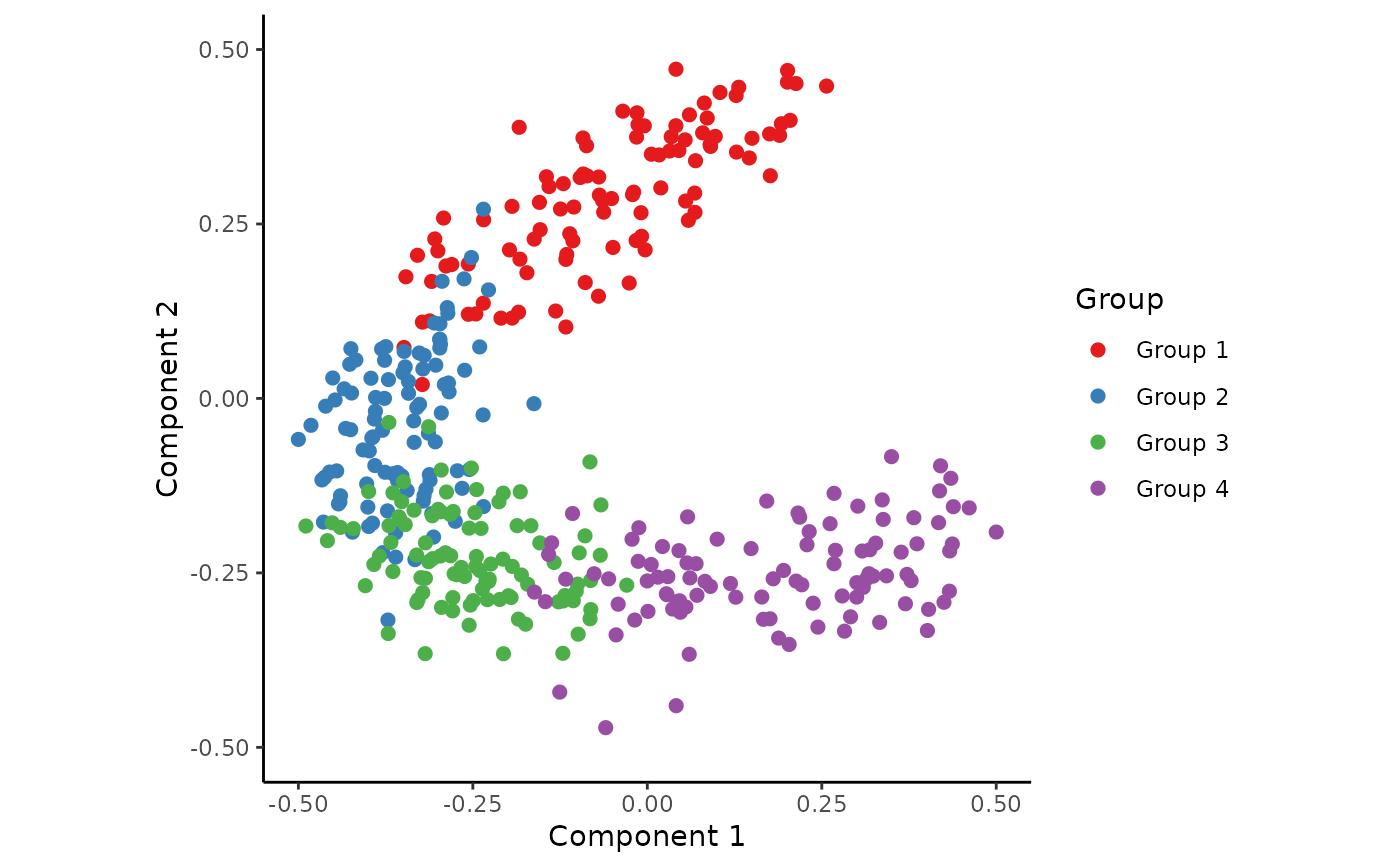infer_trajectory infers a trajectory through samples in a given space in a four-step process:
Perform k-means clustering
Calculate distance matrix between cluster centers using a custom distance function
Find the shortest path connecting all cluster centers using the custom distance matrix
Iteratively fit a curve to the given data using principal curves
Usage
infer_trajectory(
space,
k = 4,
thresh = 0.001,
maxit = 10,
stretch = 0,
smoother = "smooth_spline",
approx_points = 100
)Arguments
- space
A numeric matrix or a data frame containing the coordinates of samples.
- k
The number of clusters to cluster the data into.
- thresh
convergence threshold on shortest distances to the curve.
- maxit
maximum number of iterations.
- stretch
A stretch factor for the endpoints of the curve, allowing the curve to grow to avoid bunching at the end. Must be a numeric value between 0 and 2.
- smoother
choice of smoother. The default is
"smooth_spline", and other choices are"lowess"and"periodic_lowess". The latter allows one to fit closed curves. Beware, you may want to useiter = 0withlowess().- approx_points
Approximate curve after smoothing to reduce computational time. If
FALSE, no approximation of the curve occurs. Otherwise,approx_pointsmust be equal to the number of points the curve gets approximated to; preferably about 100.
Value
A list containing several objects:
path: the trajectory obtained by principal curves.time: the time point of each sample along the inferred trajectory.
Examples
## Generate an example dataset and visualise it
dataset <- generate_dataset(num_genes = 200, num_samples = 400, num_groups = 4)
space <- reduce_dimensionality(dataset$expression, ndim = 2)
draw_trajectory_plot(space, progression_group = dataset$sample_info$group_name)
#> Ignoring unknown labels:
#> • fill : "Group"
 ## Infer a trajectory through this space
traj <- infer_trajectory(space)
## Visualise the trajectory
draw_trajectory_plot(space, path=traj$path, progression_group = dataset$sample_info$group_name)
#> Ignoring unknown labels:
#> • fill : "Group"
## Infer a trajectory through this space
traj <- infer_trajectory(space)
## Visualise the trajectory
draw_trajectory_plot(space, path=traj$path, progression_group = dataset$sample_info$group_name)
#> Ignoring unknown labels:
#> • fill : "Group"
